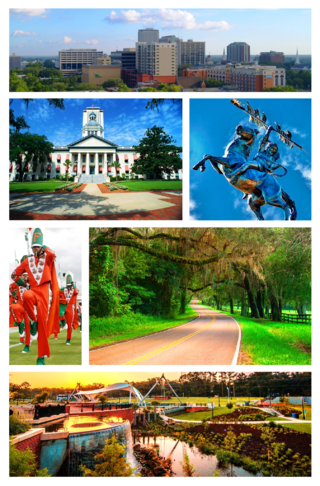
Tallahassee is the capital city of the U.S. state of Florida. It is the county seat and only incorporated municipality in Leon County. Tallahassee became the capital of Florida, then the Florida Territory, in 1824. In 2020, the population was 196,169, making it the 8th-largest city in the U.S state of Florida, and the 126th-largest city in the United States. The population of the Tallahassee metropolitan area was 385,145 as of 2018. Tallahassee is the largest city in the Florida Big Bend and Florida Panhandle region, and the main center for trade and agriculture in the Florida Big Bend and Southwest Georgia regions.

Clearwater is a city located in Pinellas County, Florida, United States, northwest of Tampa and St. Petersburg. To the west of Clearwater lies the Gulf of Mexico and to the southeast lies Tampa Bay. As of the 2020 census, the city had a population of 117,292. Clearwater is the county seat of Pinellas County and is the smallest of the three principal cities in the Tampa–St. Petersburg–Clearwater metropolitan area, most commonly referred to as the Tampa Bay Area.
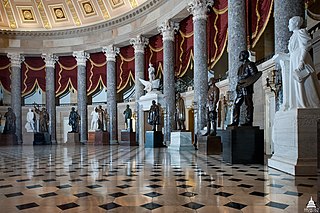
The National Statuary Hall is a chamber in the United States Capitol devoted to sculptures of prominent Americans. The hall, also known as the Old Hall of the House, is a large, two-story, semicircular room with a second story gallery along the curved perimeter. It is located immediately south of the Rotunda. The meeting place of the U.S. House of Representatives for nearly 50 years (1807–1857), after a few years of disuse in 1864 it was repurposed as a statuary hall; this is when the National Statuary Hall Collection was established. By 1933, the collection had outgrown this single room, and a number of statues are placed elsewhere within the Capitol.

The National Statuary Hall Collection in the United States Capitol is composed of statues donated by individual states to honor persons notable in their history. Limited to two statues per state, the collection was originally set up in the old Hall of the House of Representatives, which was then renamed National Statuary Hall. The expanding collection has since been spread throughout the Capitol and its Visitor's Center.

John Milton was governor of Florida through most of the American Civil War. A lawyer who served in the Florida Legislature, he supported the secession of Florida from the Union and became governor in October 1861. In that post, he turned the state into a major supplier of food for the Confederacy. In his final message to the state legislature as the war was ending, he declared that death would be preferable to reunion with the North, and was found dead of gunshot soon after. He killed himself leaving his wife and numerous children including their toddler Jefferson Davis Milton behind.
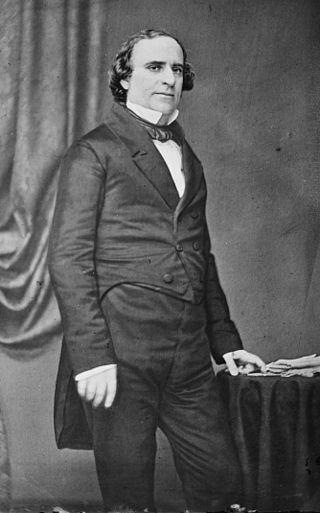
David Levy Yulee was an American politician and attorney. Born on the island of St. Thomas, then under British control, he was of Sephardic Jewish ancestry: His father was a Sephardi from Morocco, and his mother, also of Sephardi descent, was born in Sint Eustatius and raised in St. Thomas. The family moved to Florida when he was a child, and he grew up there on their extensive lands. He later served as Florida's territorial delegate to Congress. Yulee was the first person of Jewish ancestry to be elected and serve as a United States senator, serving 1845–1851 and again 1855–1861. He founded the Florida Railroad Company and served as president of several other companies, earning the nickname of "Father of Florida Railroads." In 2000 he was recognized as a "Great Floridian" by the state.
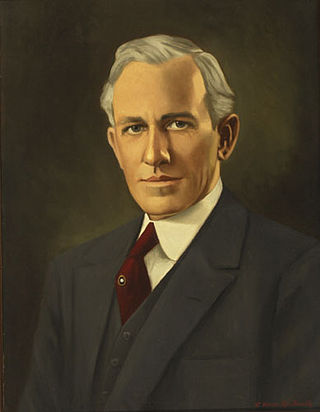
Cary Augustus Hardee was an American educator, lawyer, legislator, and banker who served as the 23rd Governor of Florida.

Augustus Emmet Maxwell was an American lawyer and politician. Maxwell served in a number of political positions in the State of Florida including as one of Florida's Senators to the Confederate States Congress, Florida Secretary of State, and as Chief Justice of the Florida Supreme Court.

Richard Bernard Stone was an American politician who served as a Democratic United States Senator from Florida from 1975 to 1980 and later served as Ambassador at Large to Central America and Ambassador to Denmark.
The history of Tallahassee, Florida, much like the history of Leon County, dates back to the settlement of the Americas. Beginning in the 16th century, the region was colonized by Europeans, becoming part of Spanish Florida. In 1819, the Adams–Onís Treaty ceded Spanish Florida, including modern-day Tallahassee, to the United States. Tallahassee became a city and the state capital of Florida in 1821; the American takeover led to the settlements' rapid expansion as growing numbers of cotton plantations began to spring up nearby, increasing Tallahassees' population significantly.
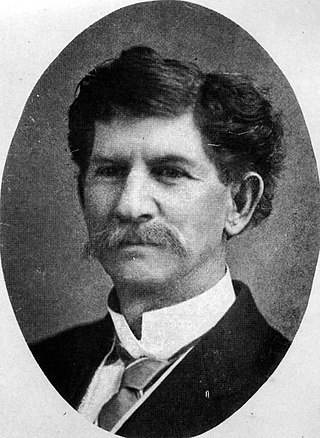
Henry Clay Crawford served as Secretary of State of Florida from 1902 to 1929, succeeding his father John Lovic Crawford, who served from 1881 to 1902, upon his death. He was a Democrat. H. Clay Crawford held several jobs before becoming chief clerk to his father. Appointed Secretary on January 28, 1902, after his father's death, he was nominated and reelected to that position until his own death.

The State Library and Archives of Florida is the central repository for the archives of state government for the state of Florida. It is located at the R.A. Gray Building on 500 South Bronough Street in Tallahassee, Florida, Florida's capital.

The Mayor of Tallahassee is head of the executive branch of the government of Tallahassee, Florida.

Mariano D. Papy, also known as M. D. Papy, was an American planter, attorney, and politician from the state of Florida. Papy served as the 5th Florida Attorney General from 1853 to 1861.

There are several works of art in the United States Capitol honoring former leaders of the Confederate States of America and generals in the Confederate States Army, including eight statues in the National Statuary Hall Collection, busts and portraits.

American politician John Quincy Adams served as President of the United States (1825–1829) and United States Secretary of State (1817–1825). Prior to being president, he had served as United States Senator from Massachusetts (1803–1808) and had diplomatic experience as United States Minister to United Kingdom (1815–1817), Russia (1809–1814), Prussia (1797–1801) and the Netherlands (1794–1797). After losing the 1828 presidential election, he served as a member of the U.S. House of Representatives from Massachusetts for 17 years. He is the only American president to be elected to the House of Representatives after leaving office.
Charles Alexander Martin Finley was an American emeritus secretary of the Florida Senate and state representative as well as a newspaper publisher, printer for the state of Florida, an academic administrator, and the secretary to Florida’s 15th governor Francis P. Fleming.















